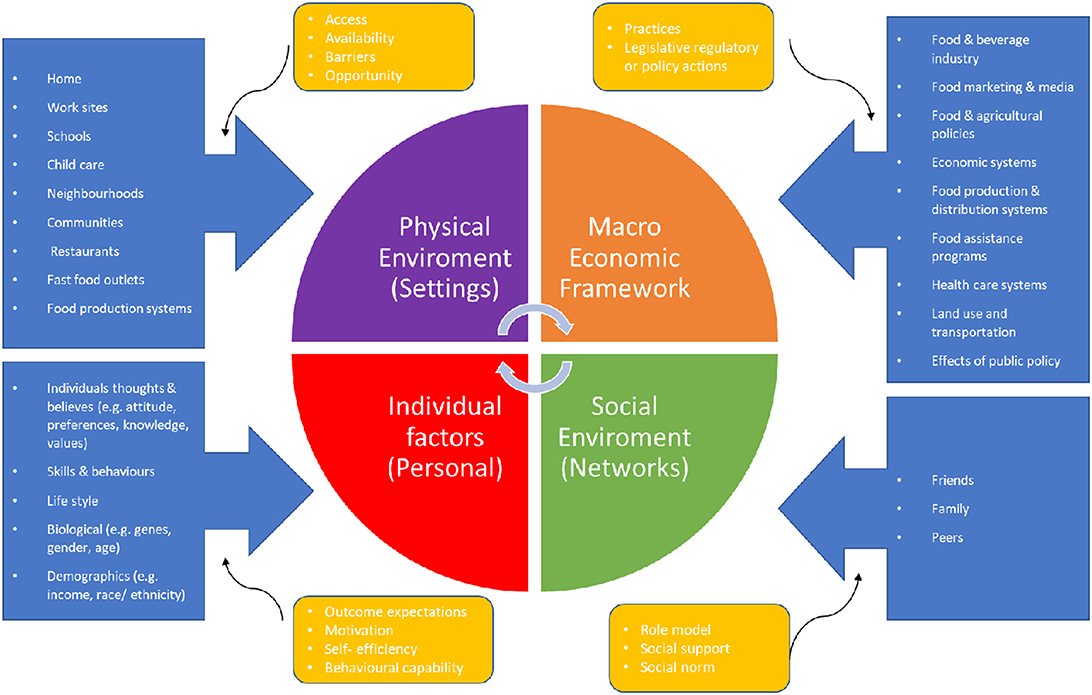Understanding traditional and modern eating
This study likewise found and highlighted the increased usage of processed “home cooking,” such as chocolate, desserts, and treats. These observations were partly verified by a food usage research study which investigated modifications in the sale of food in over 10,000 Italian shops (8), showing a boost in the consumption of pasta, flour, eggs, long-life milk and frozen foods, together with a decrease of fresh food purchases.
Surprisingly, the outcomes of a COVIDiet Research study, conducted on a huge sample (N = 7,514; snowball tasting approach) in Spain (a country also seriously affected by COVID-19) showed that confinement in general resulted in the adoption of much healthier dietary behaviors, measured as adherence to the Mediterranean diet plan (13). While the above-mentioned research studies concentrated on the general population, some studies specifically targeted more youthful people.
Gallo et al. (45) investigated the impact of COVID-19 isolation steps on Australian university trainees and observed increased snacking frequency and the energy density of taken in snacks. Increased energy consumption was observed in females (but not males), http://www.chandabags.com/food-culture-what-is-it/ while exercise was impacted for both sexes the percentage of students with “sufficient” exercise levels had to do with 30% lower, irishbirder.com in comparison with data collected in the years 2018 and 2019.
Groceries was the only item classification in which consumers throughout all nations regularly anticipated costs more (17, 19). The above literature relating to modifications in food purchase/consumption patterns throughout COVID-19 files general trends, but does not relate them to specific changes in individuals’s circumstances due to the pandemic and resulting lockdown.
What Is Healthy Eating Without Cultural Foods?
read this blog article
Food: Identity of Culture and Religion, ResearchGate https://thepickledspruit.org/.
Therefore, the primary aim of our research study was to comprehend the changes in food intake behavior and identify the factors influencing individual modifications in the food consumption frequencies of different food categories, such as fresh food, preserved food, sweet treats, https://edgegalaxys9.com/food-culture-and-diabetes-in-the-united-states and alcoholic beverages. To do this, we analyzed 3 countries that were likewise affected by COVID-19 infection rates in the first wave, but which differed in the extent of their lockdown measures: namely, Denmark, Germany, and Slovenia.
g., not everyone was required to work from house. To prevent some confounding elements, the research study was carried out concurrently using online panel surveys in late April and early May 2020 in 3 European Union nations Denmark, Germany, and Slovenia. The 3 nations are comparable in terms of all having timely and substantial government constraints enforced at the beginning of the pandemic.
Although this paper is focused on modifications in food usage, provided the scale of the pandemic and its effects on the food supply system, changes in people’s food-related habits are also most likely to have implications for the resilience of food systems. Conceptual Structure We established a conceptual structure of aspects that potentially caused changes in food consumption at the level of the private customer throughout the pandemic (Figure 1), building on 2 strands of literature: food choice process, and behavior modification.
* Not portrayed in the figure due to space constraints: feedback loops gradually in between habits, personal impacts and the individual food system, as recommended by social cognitive theory [adjusted from (24)] +The box on food-related behavior before the pandemic consists of the very same 3 conceptual aspects as the box “throughout the pandemic”.
Cultures, food traditions and healthy eating
e., the procedures of consuming (what, where, with whom, how frequently), obtaining (where, how, how frequently), and preparing food (what, how). Food-related behaviors are affected by the personal food system, i. e., food-related values and methods, which in turn are affected by personal aspects, resources, and perfects (20, 21). We presented a vibrant point of view by acknowledging that food consumption during the pandemic is related to food usage before the pandemic.
 Traditional Romanian chicken dumpling soup! Because the cold weather is coming. Click here for the recipe: https://thepickledsp… Food, Romanian food, Food culture
Traditional Romanian chicken dumpling soup! Because the cold weather is coming. Click here for the recipe: https://thepickledsp… Food, Romanian food, Food cultureWe further brought into play dynamic habits modification designs (24) based on Bandura’s (25) social cognitive theory and principle of reciprocal determinism, postulating that individual, contextual, and behavioral elements produce a feedback loop and affect each other. We therefore suggest that individual experiences with changes in food-related habits throughout the pandemic possibly affect future behavior after the pandemic and might also lead to modifications in individual food-related values and methods.
This shows that government restrictions and lockdown procedures (together with limitations imposed by the economic sector) had extensive influence on the micro- and macro-contexts of food choice. For circumstances, the closure of physical offices and the closure of schools and daycare organizations disturbed people’s daily life and possibly altered how, where and with whom people consumed meals and treats.
Federal government suggestions to remain at home are most likely to have actually impacted how typically (and where) people went food shopping. At the individual level, we expected that the private threat understanding of COVID-19 might have triggered modifications in food consumption. One proposition is that individuals concerned about the disease would eat more healthily in order to strengthen their body immune system [e.
Food And Culture
An alternative proposition is that individuals distressed about COVID-19 may consume more alcohol and consume more home cooking, such as snacks and cake, in order to better cope with the situation [e. g., (6, 7, 11). The pandemic also had possible influence on households’ food-related resources, i. e., money and time.
 How Culture and Society Influence Healthy Eating
How Culture and Society Influence Healthy Eatingg., due to minimized working hours. In regards to time, families were impacted by the pandemic in really various ways; some individuals faced extreme time restraints while others had more time available for food preparation and intake than previously. In our empirical analysis, we evaluated the effects that pandemic-related changes at an individual level and contextual changes had on food consumption.
The sample contains 2,680 valid cases in total: 1,105 from Denmark, 973 from Germany, and 602 from Slovenia. Participants were hired via consumer panel companies with quota tasting for the age 18+ years, gender, and area. Participants completed the online survey upon invite. Out of 4,171 participants who had finished the study, 1,491 were excluded (36% of initial sample) since they had not correctly reacted to the 2 attention-check concerns in the study.
e., the time participants needed to finish the survey, varied between 5 minutes 28 s to 38 minutes 56 s; the mean interview period was 14 minutes 31 s. The study was established in English and then equated to Danish, German and Slovenian (the complete survey can be retrieved from the Supplementary Product).
